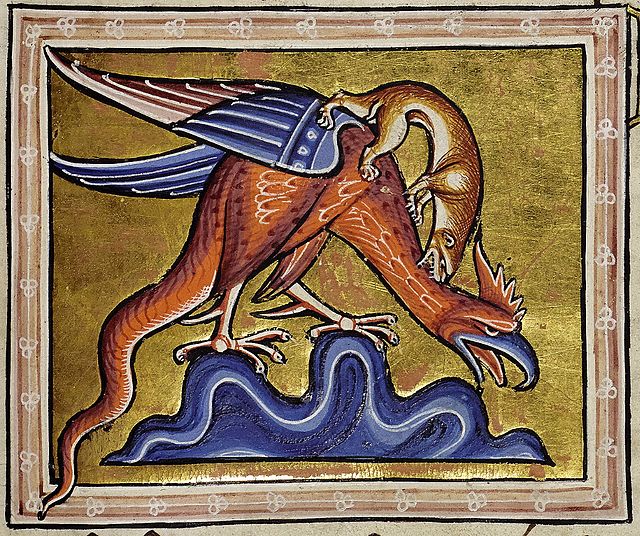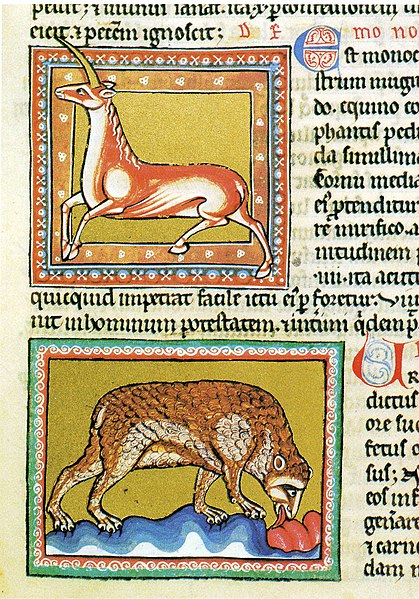The Aberdeen Bestiary is a 12th-century English illuminated manuscript bestiary that was first listed in 1542 in the inventory of the Old Royal Library at the Palace of Westminster. Due to similarities, it is often considered to be the "sister" manuscript of the Ashmole Bestiary. The connection between the ancient Greek didactic text Physiologus and similar bestiary manuscripts is also often noted. Information about the manuscript's origins and patrons are circumstantial, although the manuscript most likely originated from the 13th century and was owned by a wealthy ecclesiastical patron from north or south England. Currently, the Aberdeen Bestiary resides in the Aberdeen University Library in Scotland.
Adam naming the beasts, in an illustration from the Aberdeen Bestiary
Folio 56 Recto - Phoenix (detail)
Folio 66 Recto - Basilisk (detail)
Folio 9 Recto - Panther (detail)
A bestiary is a compendium of beasts. Originating in the ancient world, bestiaries were made popular in the Middle Ages in illustrated volumes that described various animals and even rocks. The natural history and illustration of each beast was usually accompanied by a moral lesson. This reflected the belief that the world itself was the Word of God and that every living thing had its own special meaning. For example, the pelican, which was believed to tear open its breast to bring its young to life with its own blood, was a living representation of Jesus. Thus the bestiary is also a reference to the symbolic language of animals in Western Christian art and literature.
Monoceros and Bear. Bodleian Library, MS. Ashmole 1511, The Ashmole Bestiary, Folio 21r, England (Peterborough?), Early 13th century.
"The Leopard" from the 13th-century bestiary known as the "Rochester Bestiary"
The Peridexion Tree
Adam naming the animals, in a detail from the 12th century Aberdeen Bestiary







